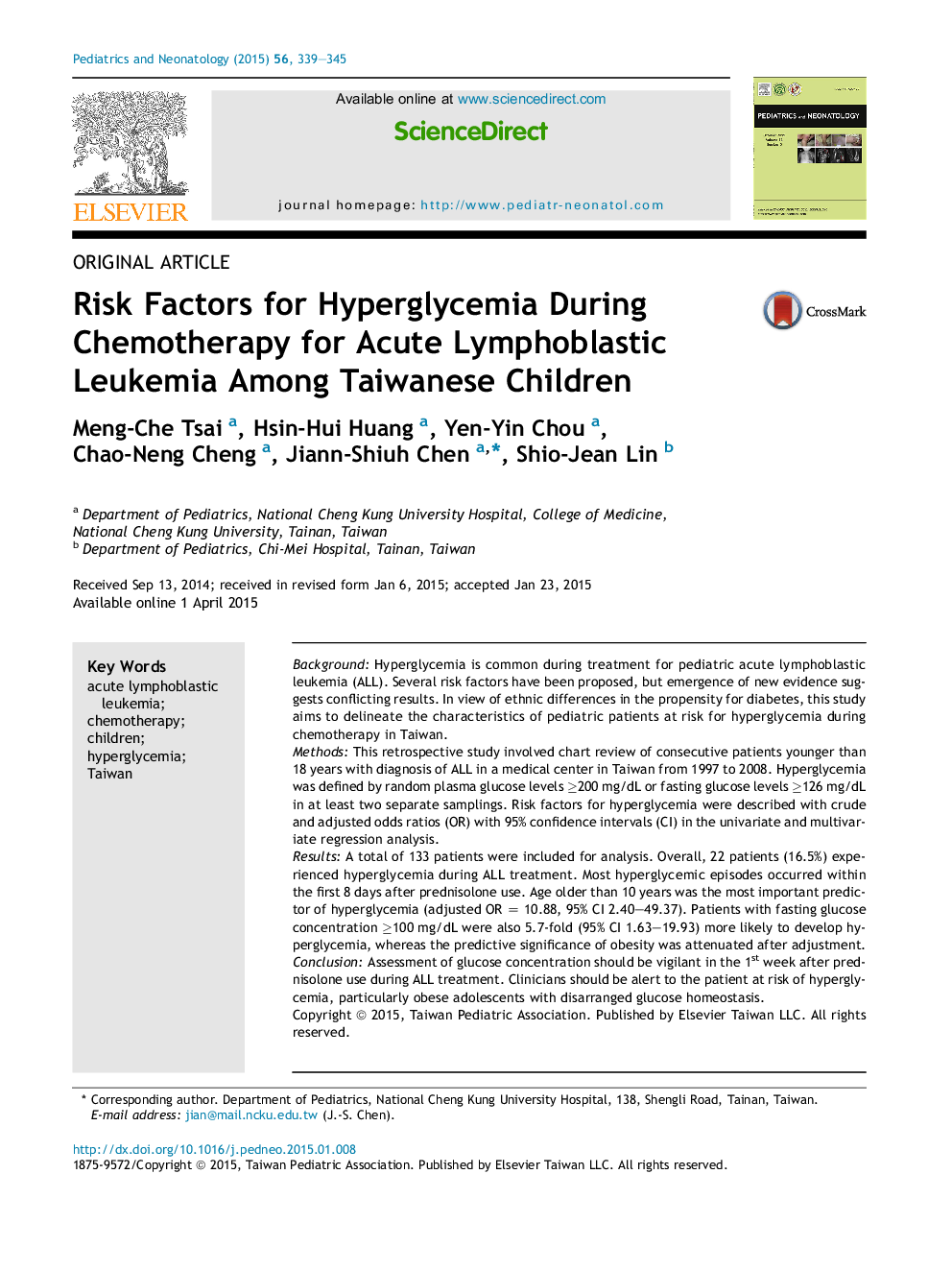| Article ID | Journal | Published Year | Pages | File Type |
|---|---|---|---|---|
| 4175175 | Pediatrics & Neonatology | 2015 | 7 Pages |
BackgroundHyperglycemia is common during treatment for pediatric acute lymphoblastic leukemia (ALL). Several risk factors have been proposed, but emergence of new evidence suggests conflicting results. In view of ethnic differences in the propensity for diabetes, this study aims to delineate the characteristics of pediatric patients at risk for hyperglycemia during chemotherapy in Taiwan.MethodsThis retrospective study involved chart review of consecutive patients younger than 18 years with diagnosis of ALL in a medical center in Taiwan from 1997 to 2008. Hyperglycemia was defined by random plasma glucose levels ≥200 mg/dL or fasting glucose levels ≥126 mg/dL in at least two separate samplings. Risk factors for hyperglycemia were described with crude and adjusted odds ratios (OR) with 95% confidence intervals (CI) in the univariate and multivariate regression analysis.ResultsA total of 133 patients were included for analysis. Overall, 22 patients (16.5%) experienced hyperglycemia during ALL treatment. Most hyperglycemic episodes occurred within the first 8 days after prednisolone use. Age older than 10 years was the most important predictor of hyperglycemia (adjusted OR = 10.88, 95% CI 2.40–49.37). Patients with fasting glucose concentration ≥100 mg/dL were also 5.7-fold (95% CI 1.63–19.93) more likely to develop hyperglycemia, whereas the predictive significance of obesity was attenuated after adjustment.ConclusionAssessment of glucose concentration should be vigilant in the 1st week after prednisolone use during ALL treatment. Clinicians should be alert to the patient at risk of hyperglycemia, particularly obese adolescents with disarranged glucose homeostasis.
